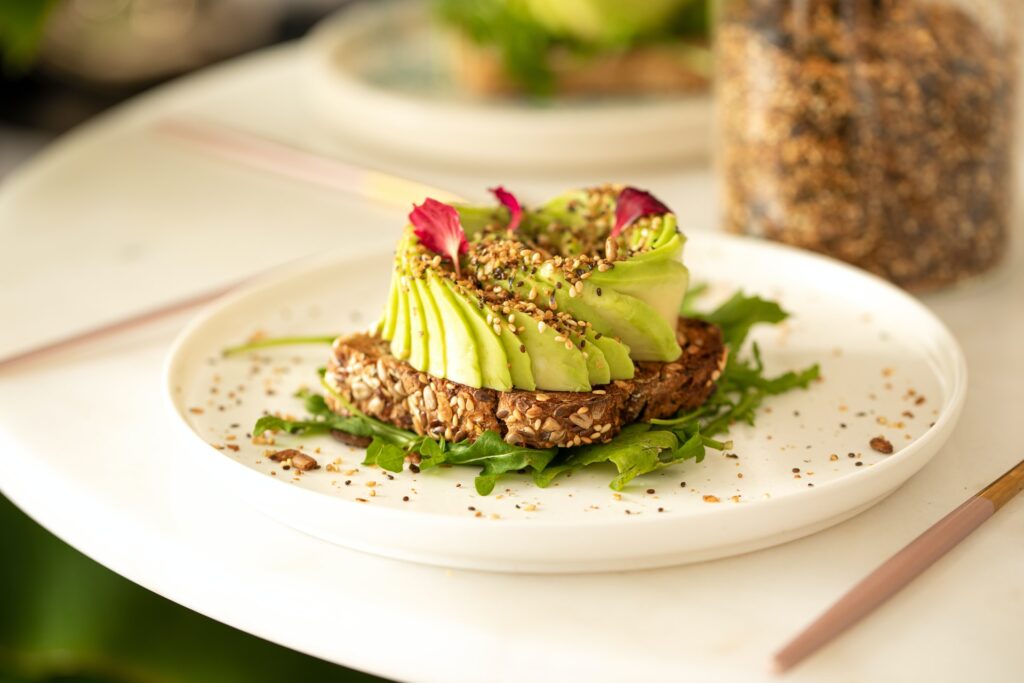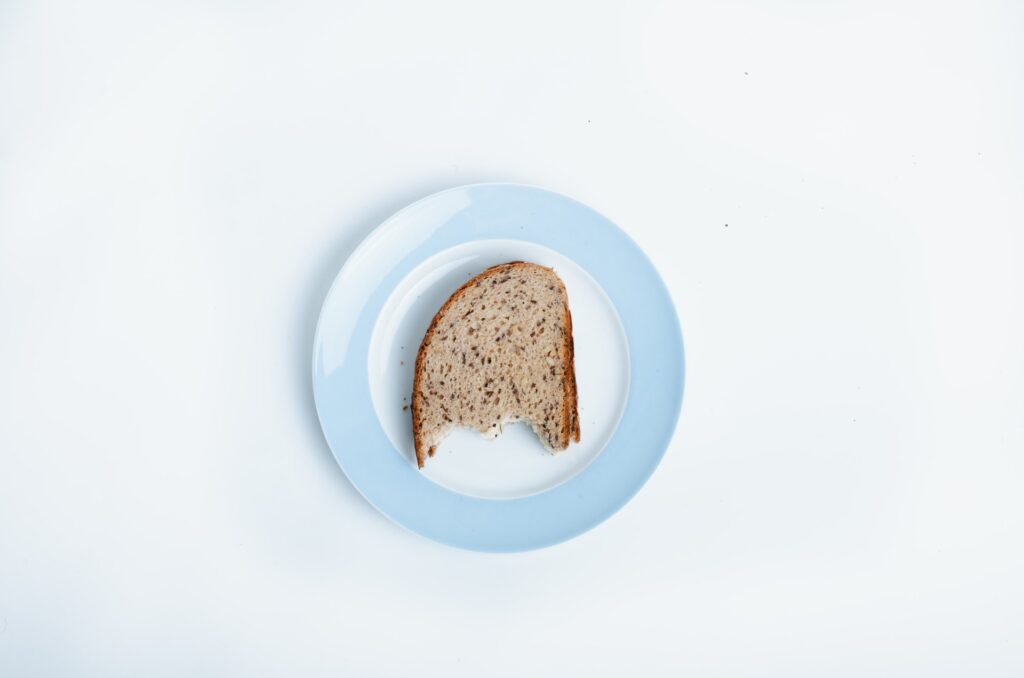Bread—can’t live with it, can’t live without it. This delicious carb is regular food for some and a pure, unadulterated addiction for others. Toasted white bread is one of the most common breakfast foods across the world, whether it’s anointed with butter, spread with marmite, or blessed with jam.
Regular white bread is made of refined flour, which contains sugar and is stripped of the majority of its fibre and other nutrients. This may make it easier on your tummy (unless you can’t have gluten!), but it is not necessarily nutritious.
This is why white bread isn’t considered a particularly healthy option. Everything in moderation, of course, but does this mean all bread should be avoided? No; other grainy types of bread contain plenty of fibre and crucial nutrients, which make them a great addition to our diet. Here are a few of the healthiest kinds of bread you can eat.
Pure Whole Wheat Bread
White bread flour is made of the starchy core of the wheat kernel called the endosperm. Pure whole wheat flour uses the entire kernel. This means the flour contains bran, germ, and endosperm, which makes it highly nutritious and filled with fibre.
Considered by some to be the healthiest bread to eat, whole wheat bread is a great option for most moderate carb diets. Read the label of your 100 percent whole-wheat bread carefully before buying, however, to ensure there are no additives.
Some red flags include “enriched” wheat, high fructose corn syrup, and chemical names you can’t even pronounce. Steer clear from such products as they have additives that are bad for you. Each serving of bread should contain at least two grams of fibre, so always keep an eye out for that.
Making a whole wheat sandwich for lunch or toast as breakfast is a great way of adding fibre and vital nutrients to your diet.

Whole Grain Bread
Similar to whole wheat, whole grain also uses the entire kernel, but it doesn’t have to be wheat. Whole grain flour can contain anything from wheat to quinoa, either on its own or in a blend of a few grains.
This flour is packed with protein, antioxidants, minerals, and vitamin B, which makes it one of the healthiest flours out there.
Some whole grain flours are made with healthy ingredients like red rice, brown rice or wild rice, for example. Healthy rice flours have numerous minerals that aid heart and digestive health.
Some whole grains can be too heavy for people with chronic kidney diseases. However, some whole-grain ingredients are great for kidney health like buckwheat, barley, millet and quinoa.
A healthy person can include any whole-grain bread into their diet, but people with health conditions should do some research to find the right whole grain for them.

Sourdough Bread
Sourdough bread is often considered the healthiest bread on earth. It is certainly healthier than regular white bread and perhaps even whole wheat bread, depending on your nutritional needs.
The sourdough starter is a yeasty and doughy paste that has wild yeast and a bacteria called lactobacilli. The starter helps with the fermentation process as it is mixed with flour, water, and salt to create the dough.
Sourdough bread is all about fermentation as the dough is left to rise at room temperature for 8 to 14 hours. You can also proof the dough for up to 36 hours in the fridge, as it may not be able to handle any more than that.
Even though the probiotic bacterias don’t survive the baking process, the dough is left with an ample amount of lactic acid bacteria, which is an antioxidant and aids in the creation of healthy microbes in the stomach.
Sourdough bread is a healthy option for breakfast toast. It has a hint of sourness that goes well with avocado, eggs, bacon, cheese, and other toast companions.
Read: 10 IDEAL places to eat amazing sourdough bread in London

Sprouted Bread
We have already mentioned that whole wheat flour still boasts the entire kernel, which increases its healthiness. Sprouted bread flour takes it another step further. The grain is sprouted and then ground into flour. When a grain or legume germinates, it contains fewer carbs and more protein and fat.
A sprouted grain also has a higher quantity of vitamins, minerals, and antioxidants, and, accordingly, bread made from sprouted grain boasts various health benefits. By letting it germinate for one to five days, the nutrient inhibitors are significantly reduced. Antinutrients can go down up to 50 percent, making the absorption of iron, calcium, and zinc easier.
Sprouted grain bread is easier to digest because of its high digestible enzyme content and low Lectin levels. This makes it an excellent choice for people with chronic inflammation and digestive issues.
This is also the bread of choice for people with blood pressure and blood sugar problems, as it is low in calories but has a high protein content.
Oat Bread
If you choose to eat healthily, chances are that you have already included oatmeal in your diet. If you feel tired of your regular dose of oats, eat oat bread instead.
Oat bread has a soft, nutlike flavor that is pleasant to eat and easy to digest. Due to being high on health-building nutrients like magnesium, vitamin E, thiamine, iron, zinc and more, oat bread is one of the healthiest kinds of bread out there.
Oatmeal is a complex carbohydrate that is loved by people on diets. It has a high fibre content and makes you feel full for longer than sugary carbs like white bread or white rice. It is well-known for regulating blood sugar and can help control harmful lipids in our body, especially reducing triglycerides.
The fibre in oats is mostly soluble fibre. This helps keep your bowel movements normal, keeps your blood sugar steady, and attaches itself to cholesterol, helping to remove it from your body comfortably.
Sprouted Rye Bread
The Germans, Scandinavians, Russians, and Polish all love rye bread, and for good reason, too. Although rye production is mostly linked to Europe, this grain has, in recent times, become internationally popular due to its health benefits.
For starters, rye bread makes you feel fuller than even pure whole wheat bread. If you want to aid your body’s insulin management, rye should be your go-to grain. Similar to oats but even more effective, rye’s high soluble fibre helps slow down sugar absorption, hence regulating insulin levels.
If you opt for pure sprouted rye bread, you not only maximize the nutrition in the bread but also ensure that it has lesser antinutrients, which will increase your body’s capacity to take in those nutrients.
Rye has a deep earthy flavor and a touch of tartness that gives it a unique character. It can be an excellent base for any gourmet sandwich or light, delectable Scandinavian inspired dishes like Norwegian smoked salmon on rye.
Multigrain Bread
Different grains and legumes have different types of nutrients in them. For example, rye and oats have soluble fibre whilst flaxseed, almonds and sunflower have high levels of protein and fat. Wheat, on the other hand, is a great source of insoluble fibre and gives you denser energy.
What if one bread could give you the benefits of all these grains, seeds, and legumes? Well, multigrain bread can. Multigrain flour is a blend of different grains, legumes, seeds, and more. It has a deep, nutty flavour, and makes amazing pancakes and waffles, too. But nothing compares to the bread.
The bread is denser yet flavorful. This is like the superhero version of bread as it has the qualities of many different healthy ingredients.
Multigrain bread is often high on protein and fat, but it also has complex carbs that digest slowly and give a more sustainable energy flow. It is filled with vitamins, minerals, and antioxidants and is more filling than wheat bread.
Gluten-free Bread
Can’t have gluten? Relax, gluten-free flour has you covered. Gluten-free flour is made of grains that do not have gluten. It can also have a variety of seeds, nuts, and legumes.
Gluten is what gives wheat bread elasticity, but it doesn’t have any health benefits. Many people have digestive disorders or severe immune diseases like celiac disease, where their small intestine pretty much self-destructs every time they have gluten. Basically, their immune system starts attacking them.
Gluten-free bread flour can be made from potato starch, tapioca starch, corn starch, rice flour, oats and almond. It can be purely one flour or a blend of a few.
Gluten-free bread is easy on your stomach, but it can also be sugary, depending on what it is made of. However, if you find flour that is a mixture of nutrient-rich ingredients, you will end up with a healthier option.
The Bottom Line
Step away from white bread and enter the world of healthy grains. There are plenty of delicious types of bread out there, so you can take your pick according to taste, texture, and flavour. The world is your oyster (on toast).
And while you’re here, why not try this IDEAL recipe for roast garlic and rosemary bread? You won’t regret it!





